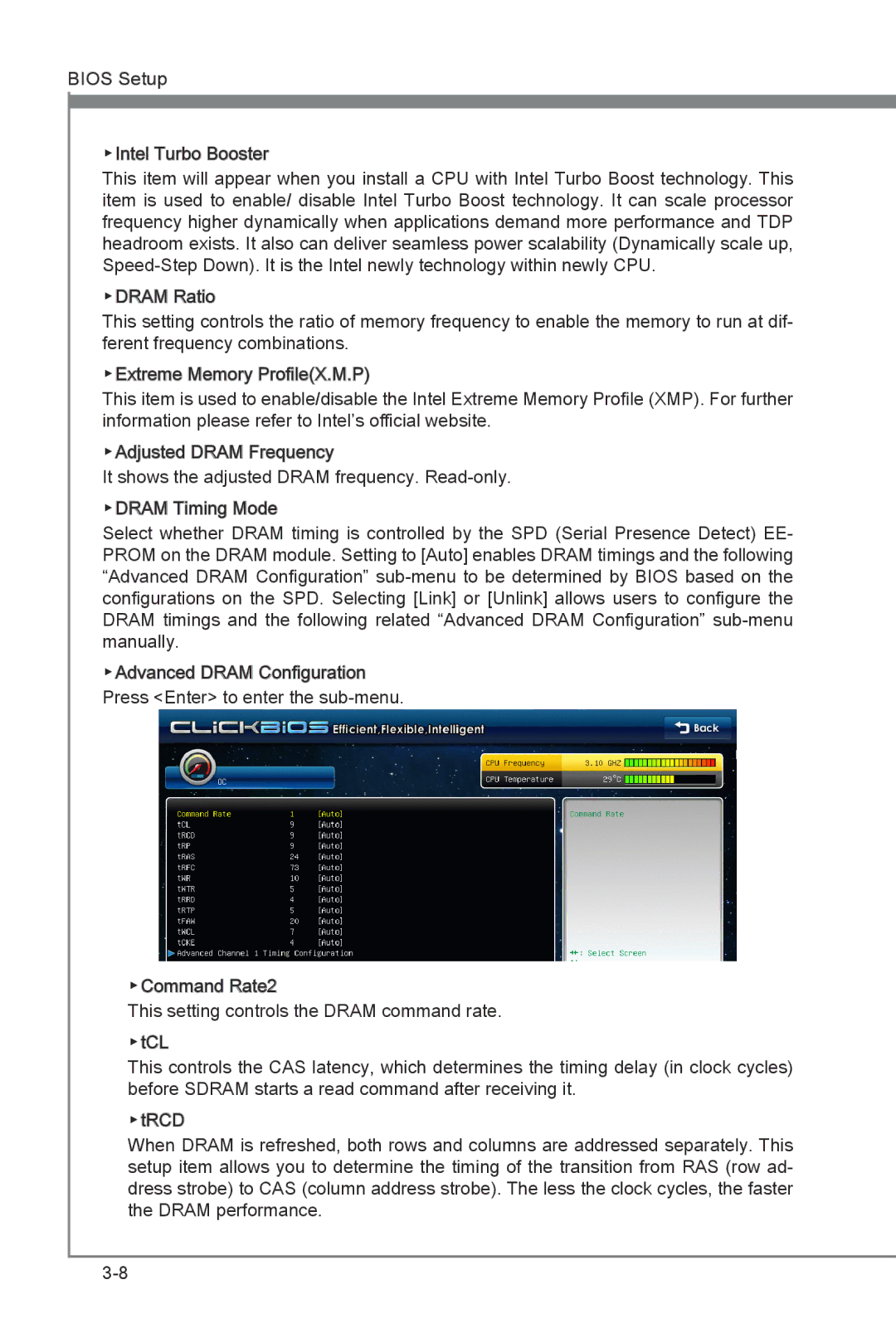
BIOS Setup
▶Intel![]()
![]()
![]() Turbo Booster
Turbo Booster
This item will appear when you install a CPU with Intel Turbo Boost technology. This item is used to enable/ disable Intel Turbo Boost technology. It can scale processor frequency higher dynamically when applications demand more performance and TDP headroom exists. It also can deliver seamless power scalability (Dynamically scale up,
▶DRAM Ratio
This setting controls the ratio of memory frequency to enable the memory to run at dif- ferent frequency combinations.
▶Extreme Memory Profile(X.M.P)
This item is used to enable/disable the Intel Extreme Memory Profile (XMP). For further information please refer to Intel’s official website.
▶Adjusted DRAM Frequency
It shows the adjusted DRAM frequency.
Select whether DRAM timing is controlled by the SPD (Serial Presence Detect) EE- PROM on the DRAM module. Setting to [Auto] enables DRAM timings and the following “Advanced DRAM Configuration”
▶Advanced DRAM Configuration Press <Enter> to enter the
▶Command Rate2
This setting controls the DRAM command rate.
▶tCL
This controls the CAS latency, which determines the timing delay (in clock cycles) before SDRAM starts a read command after receiving it.
▶tRCD
When DRAM is refreshed, both rows and columns are addressed separately. This setup item allows you to determine the timing of the transition from RAS (row ad- dress strobe) to CAS (column address strobe). The less the clock cycles, the faster the DRAM performance.
